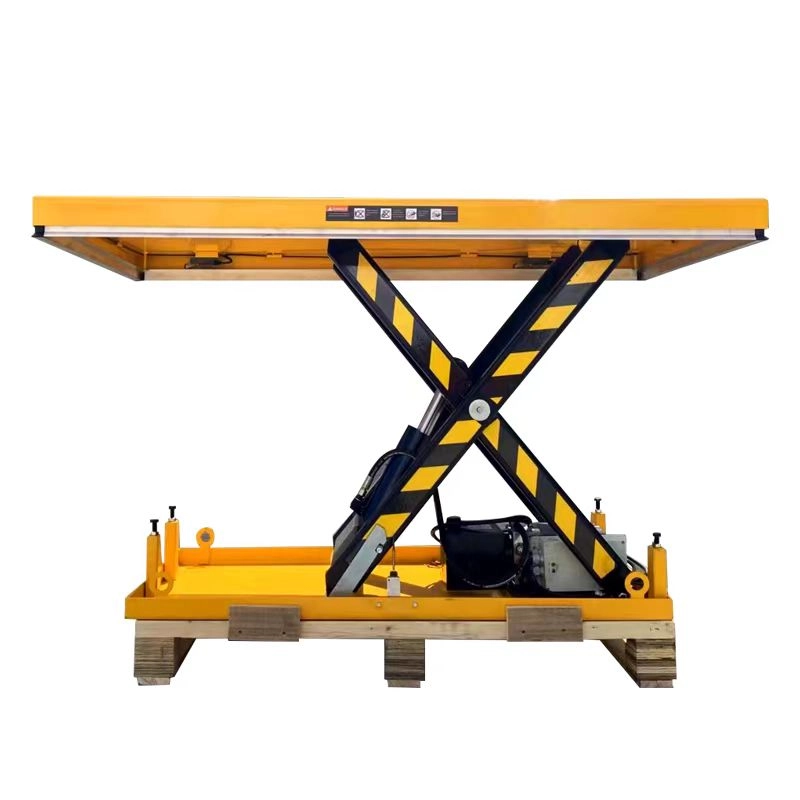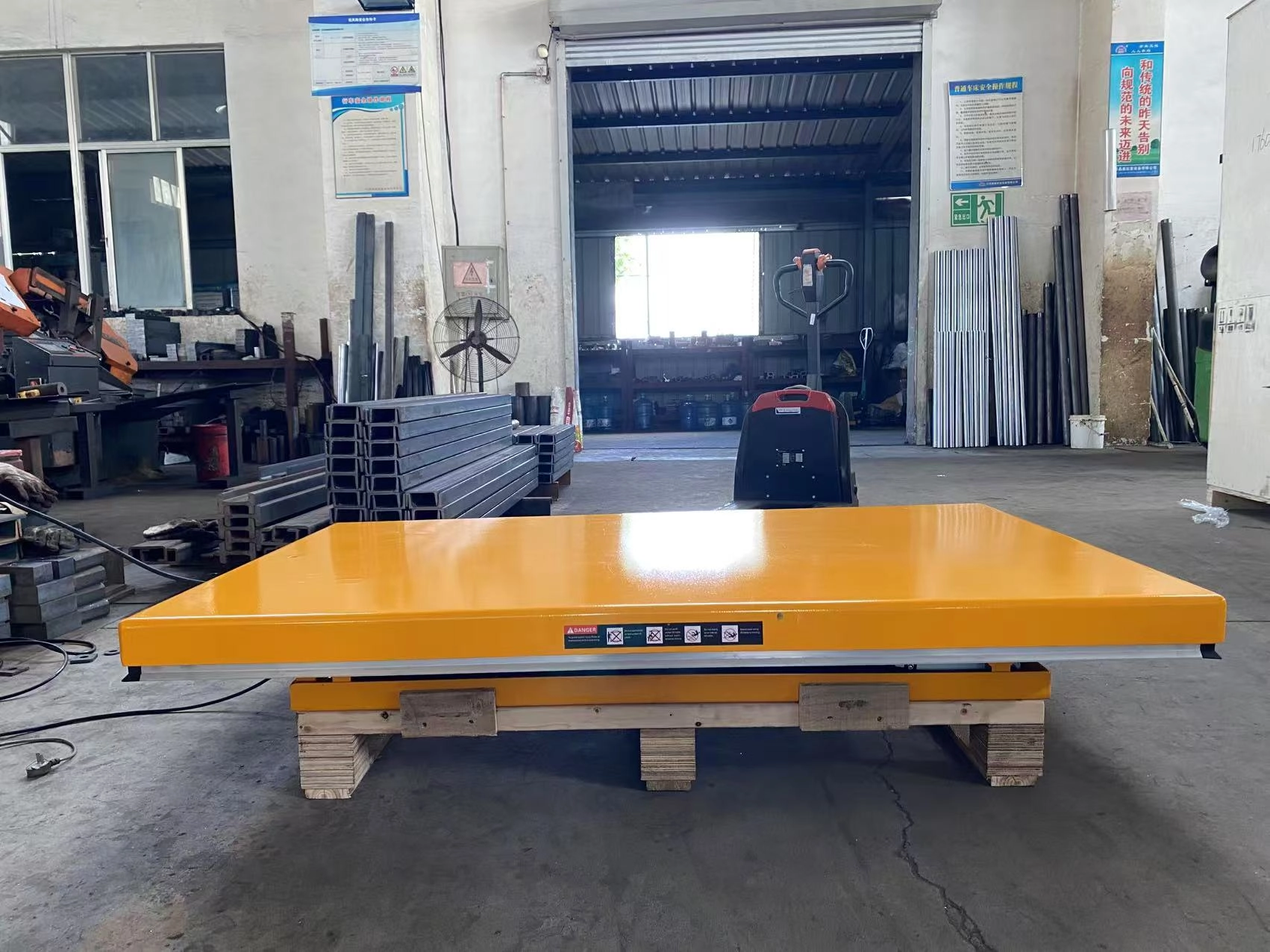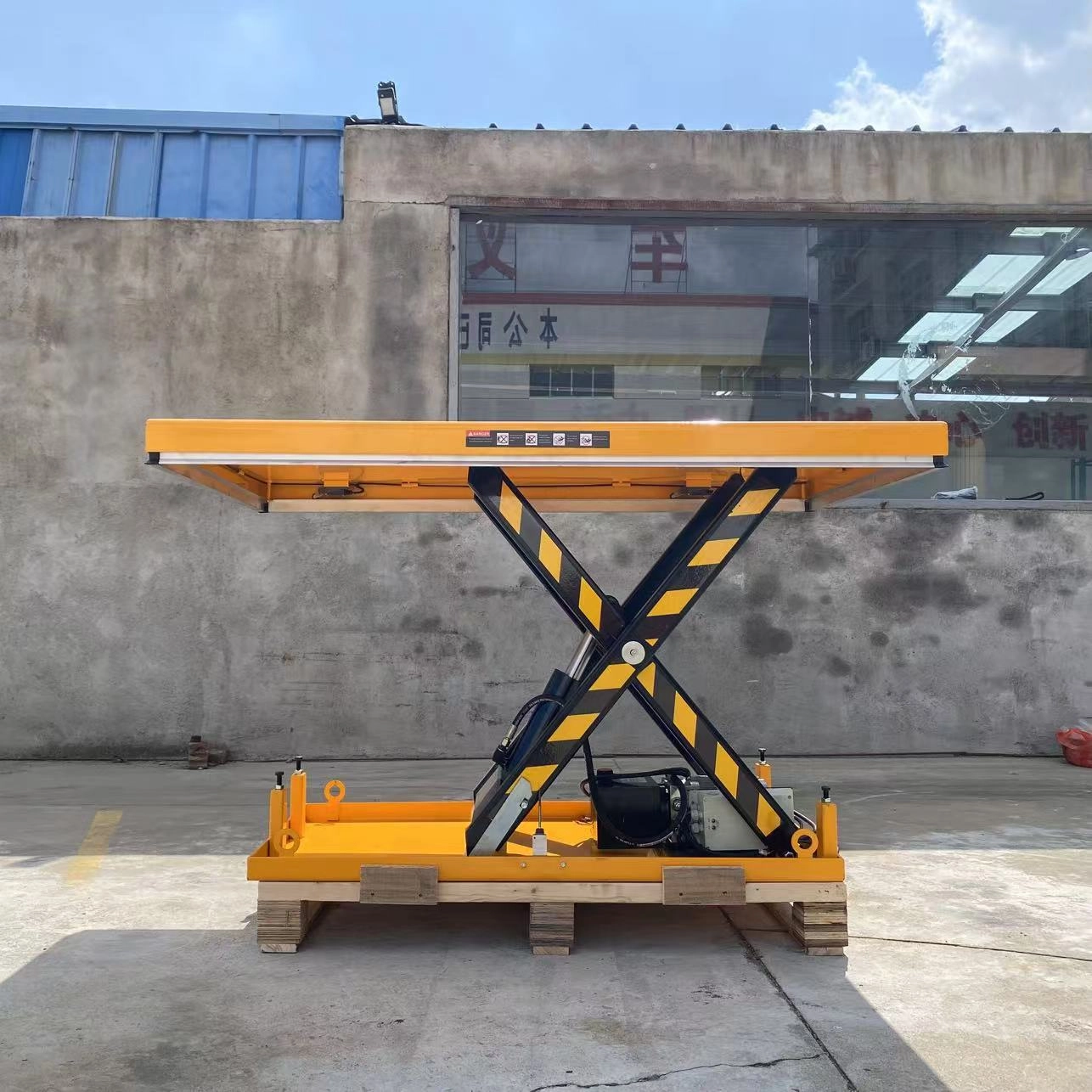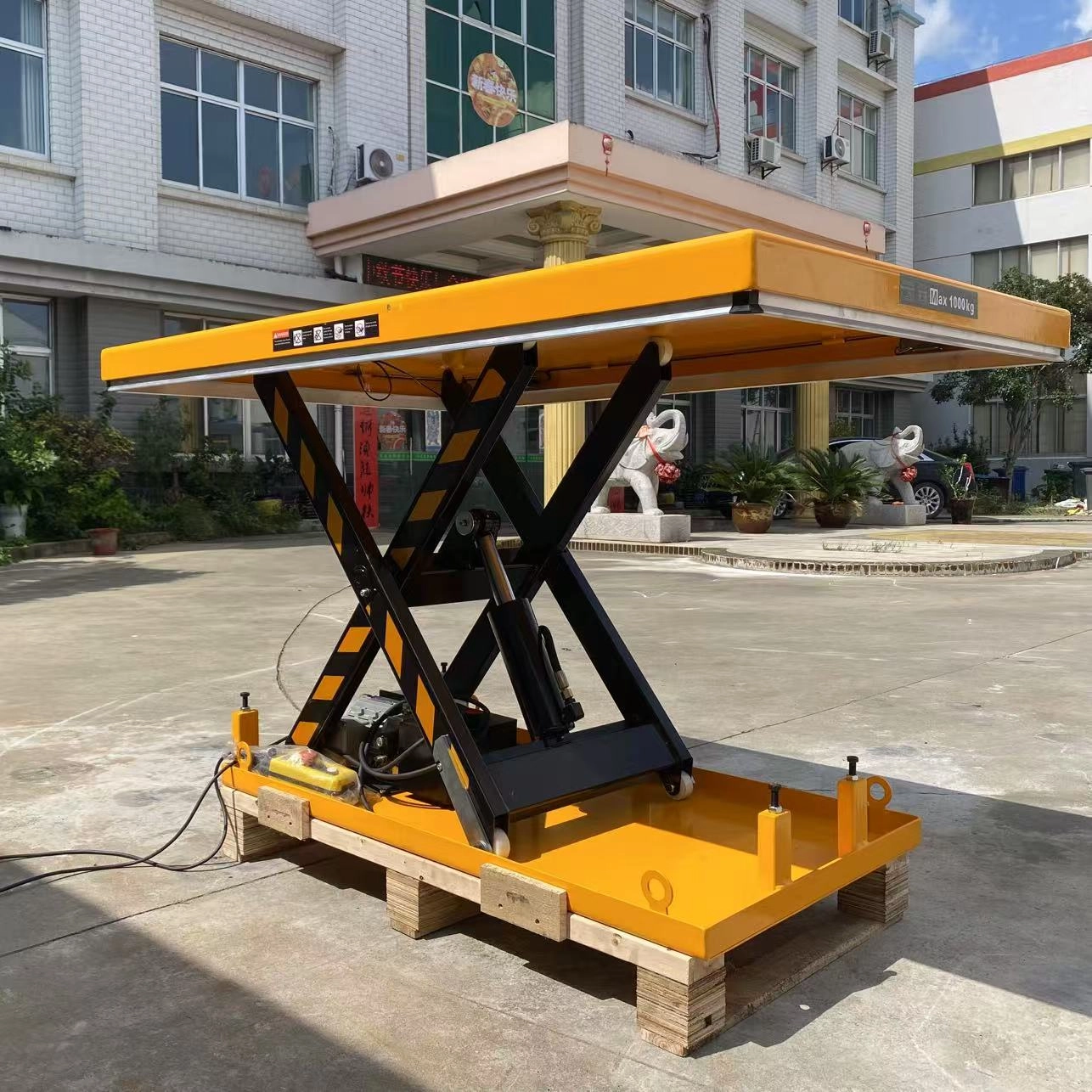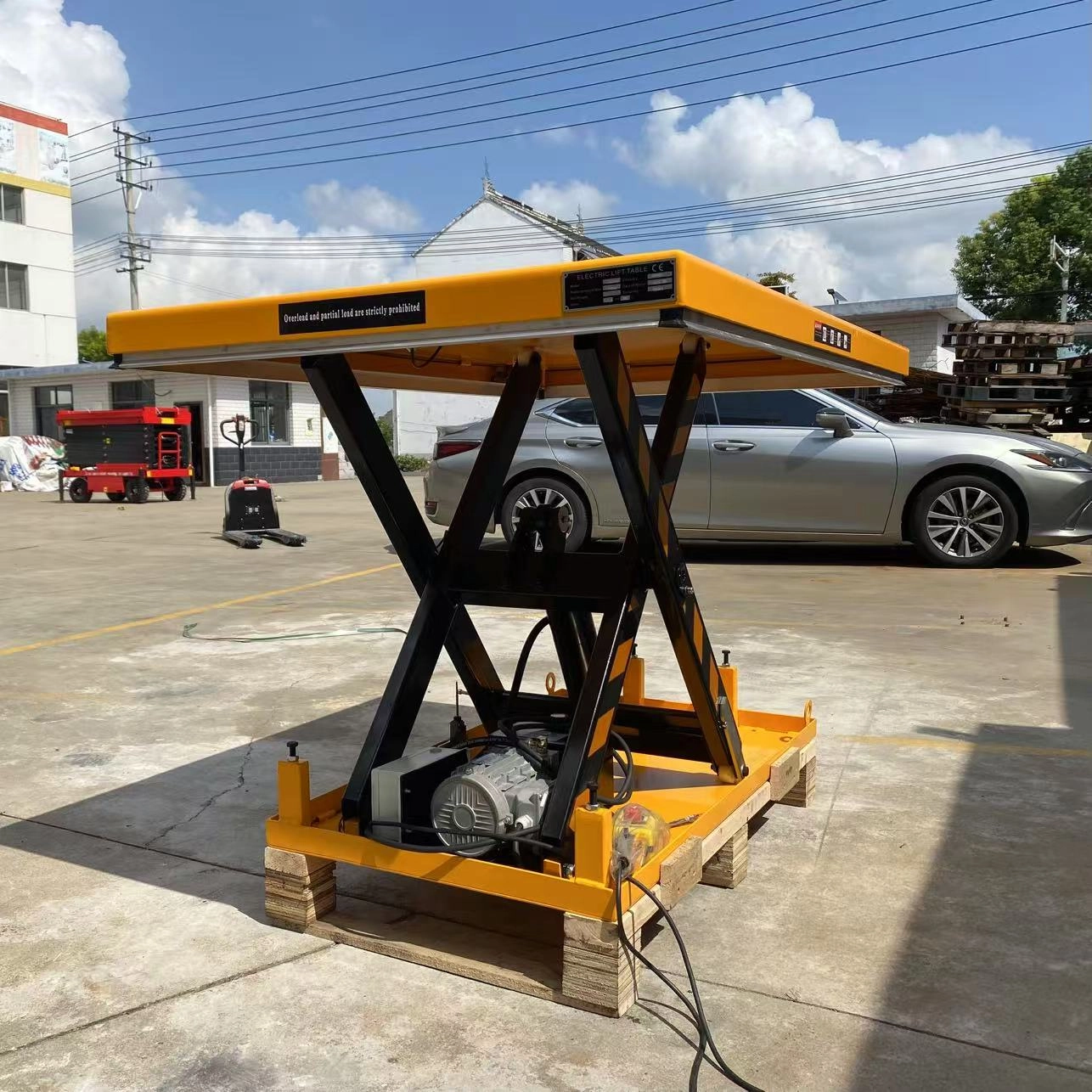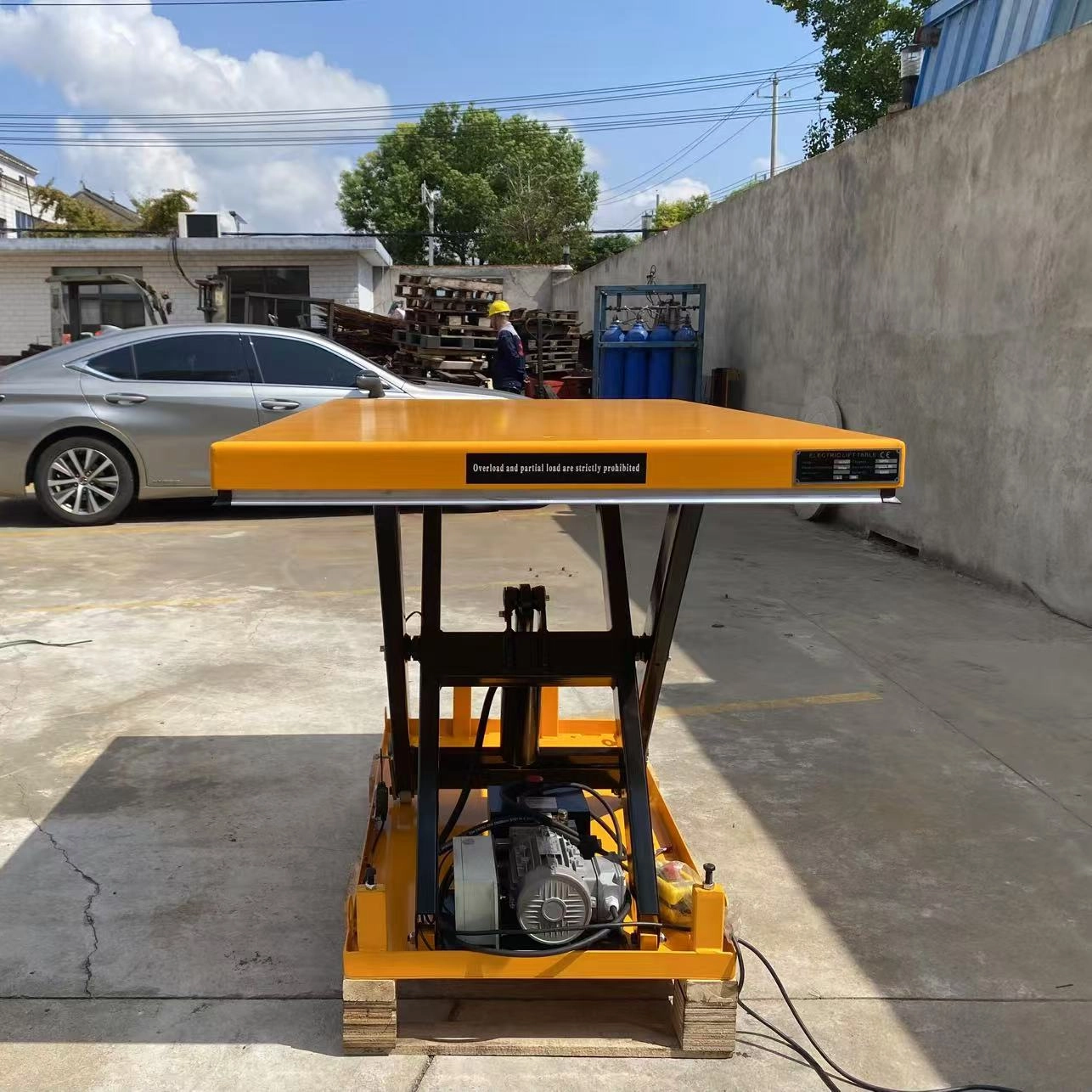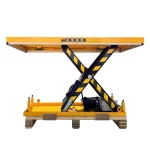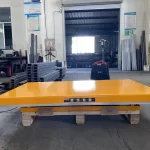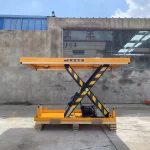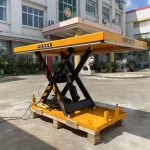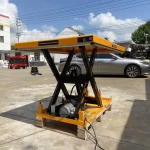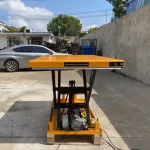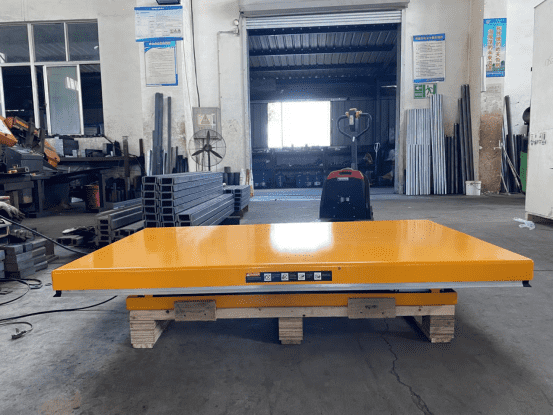



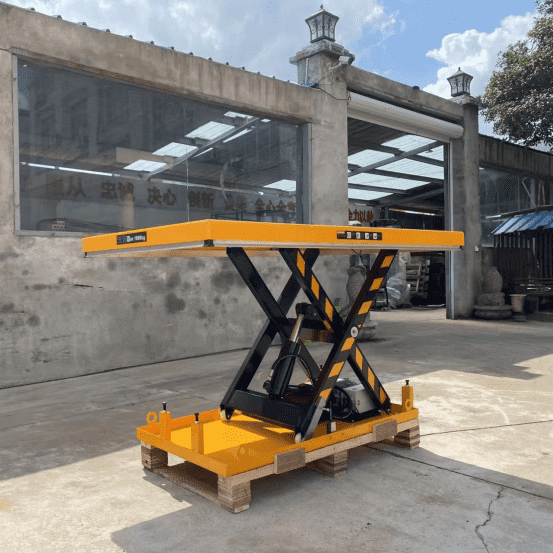
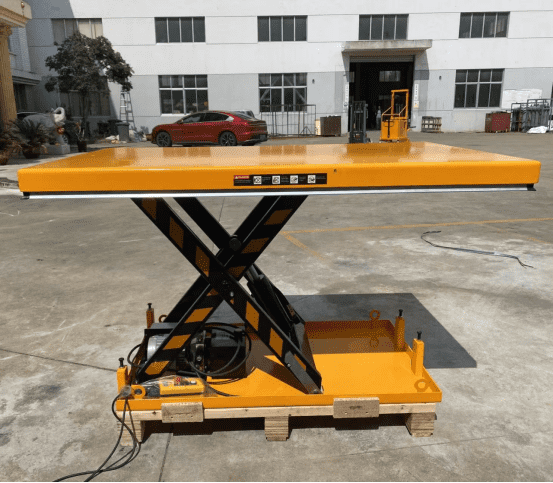
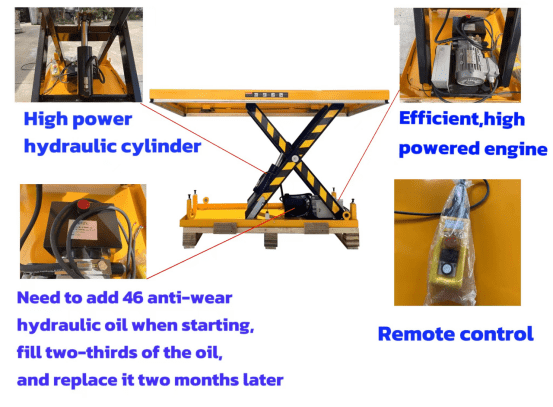
Electric Fixed Scissor Lifting Platform Description
A semi-electric fixed scissor lifting platform is a stationary lifting device that uses a combination of manual and electric mechanisms to raise and lower heavy loads. It is commonly used in industrial and warehousing settings for tasks that involve lifting materials to different heights.
Key Features:
- Scissor Mechanism:Like other scissor lifts, it uses a scissor-shaped structure that expands and contracts to raise and lower the platform vertically.
- Semi-Electric Operation:The lifting action is powered by an electric motor or hydraulic pump, but some aspects, like positioning or moving the load, may require manual effort. Unlike fully electric models, a semi-electric lift usually doesn’t have motorized mobility.
- Fixed Position:It is a stationary platform, meaning it is installed in a fixed location. It is ideal for environments where the lifting platform doesn’t need to be moved frequently.
- Hydraulic or Electric Lifting:Most models use an electric hydraulic system to power the lifting and lowering action, making it easy to operate with the press of a button.
- Load Capacity:Available in various load capacities, typically from a few hundred kilograms to several tons, depending on the model.
- Safety Features:Many models include safety features such as overload protection, emergency stop buttons, and safety locks to prevent sudden drops.
Applications:
- Warehousing:Used for lifting heavy items to shelving or mezzanine levels.
- Manufacturing:Ideal for elevating parts or products to a comfortable working height.
- Loading and Unloading:Helps in loading or unloading trucks and conveyor systems.
Advantages:
- Efficiency:Speeds up tasks that involve lifting heavy loads.
- Reduced Labor:Minimizes manual lifting and the associated risk of injury.
- Compact and Stable:Fixed platforms provide stability, especially for heavy loads.
- Cost-Effective:Semi-electric operation is more affordable than fully electric models but still offers the convenience of powered lifting.
Disadvantages
- Limited Mobility:Since it is a fixed platform, it can’t be easily moved to different locations.
- Manual Aspects:Some models may require manual effort to position loads, unlike fully electric systems that automate more of the process.

